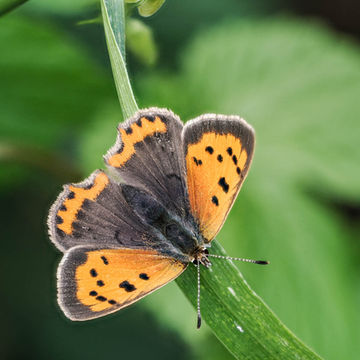

A vibrant wetland mosaic
Aqualate Mere is over a mile long, surrounded by sweeping reedbeds, fen meadows, wet pasture, and low-lying woodlands. This patchwork of habitats has been created by thousands of years of farming in the area.
It is this mosaic of interconnected, semi-natural ecosystems that enables the unique local mix of wildlife to thrive here. The catchment is home to a range of mammals, amphibians, fish, insects, and plants, including many species rare in the UK, but the mere is particularly famous for its vibrant birdlife.

Around 160 species of bird have been spotted around the mere, 86 of which are known to breed here. This is one reason why the lake and its surrounding area is designated as an internationally important wetland reserve under Ramsar, and has been a Site of Special Scientific Interest since 1956.
There are also nationally important geomorphological features around the mere. At the end of the last ice age when the glaciers covering this land began melting, they created streams of melt-water which deposited long winding banks of sand and gravel – known as eskers – as the ice retreated. The esker formation on the north side of the mere is over a kilometre in length and among the best quality examples of this landform in the UK.

Wildlife
The stunning array of birdlife is perhaps the greatest draw for visitors to the mere. The site has nationally important numbers of breeding herons and passage shoveler, and is regionally significant for breeding waders. Three different species of woodpecker have been spotted in the woodlands, as well as a wide variety of songbird species like warblers, tits, thrushes, larks and sparrows, and cuckoos during the summer months.
Three thousand or so ducks may be present on the water in wintertime, including mallard, teal, wigeon, pochard, tufted duck, goldeneye, gadwell and a historically-important flock of wintering shoveler. At dusk, when the starlings come to nest in the reed beds, spectacular murmurations ripple above the lake.
The low-lying pastures at the east and west of the reserve, dominated by rushes, provide breeding areas for wading birds such as lapwing, curlew, snipe and redshank. Prey birds like hunting barn owl and buzzard are also spotted regularly over these fields.
_edited.jpg)
Kingfisher
Often spotted from the bird hide on the south side of the mere, perched on low branches over water or flying past in brilliant blue streaks.
UK Kingfishers suffered severe declines in the 1960s–70s and the recovery of the species is linked to improved water quality as a result of better farming practices. These apex predators are an indicator species: the presence of Kingfishers signals a healthy freshwater ecosystem with abundant prey of small fish, insects and aquatic invertebrates.

Buzzard
Nesting in trees and hedgerows but preferring to hunt over open ground, the farmed and semi-natural habitats of woodland edges, pasture, and arable fields surrounding the mere suits the buzzards perfectly.
Farmland creates the buzzard’s ideal hunting conditions, and you’ll often find them hovering over the fields searching for mice, voles, rabbits, small birds or similar. The buzzard preys on creatures that like to eat the farmers’ crops, and it performs a vital service by helping to keep their numbers under control.

Great Crested Grebe
In the 19th century, the Great Crested Grebe nearly went extinct in the UK due to hunting for its feathers; only around 50 breeding pairs remained. Farm-influenced waterbodies like Aqualate Mere played a significant part in the recovery of this species.
Nutrients from the surrounding farmland increase the numbers of aquatic invertebrates and small fish in the mere. Combined with the abundant waterweeds for nesting, this creates ideal conditions for Great Crested Grebes to thrive.

Community
The unique character of this landscape is shaped not only by its wildlife, but by the people who spend time here too.
An army of dedicated local volunteers supports the work of Natural England in maintaining the reserve. This includes conducting biodiversity and habitat surveys, managing invasive species, and cutting back foliage that threatens to clog up the wetlands. They play an invaluable part in the conservation of these habitats.
The unique natural features and abundance of wildlife around Aqualate Mere attract many welcome visitors, both locals and tourists, including ramblers, bird-watchers, wildlife and landscape photographers, and families of all ages who enjoy spending time together in nature.
All the photography on this site has been genorously provided by members of our community, with particular thanks to Rose Godwin, Phil Green, Alan Hartley, Ashley Evers-Swindell and Peter Jordan. You can enjoy more of their outstanding work and get to know this landscape better in the gallery below.
Click the arrow on the right to scroll through the gallery.

.jpg)
_edited.jpg)





























